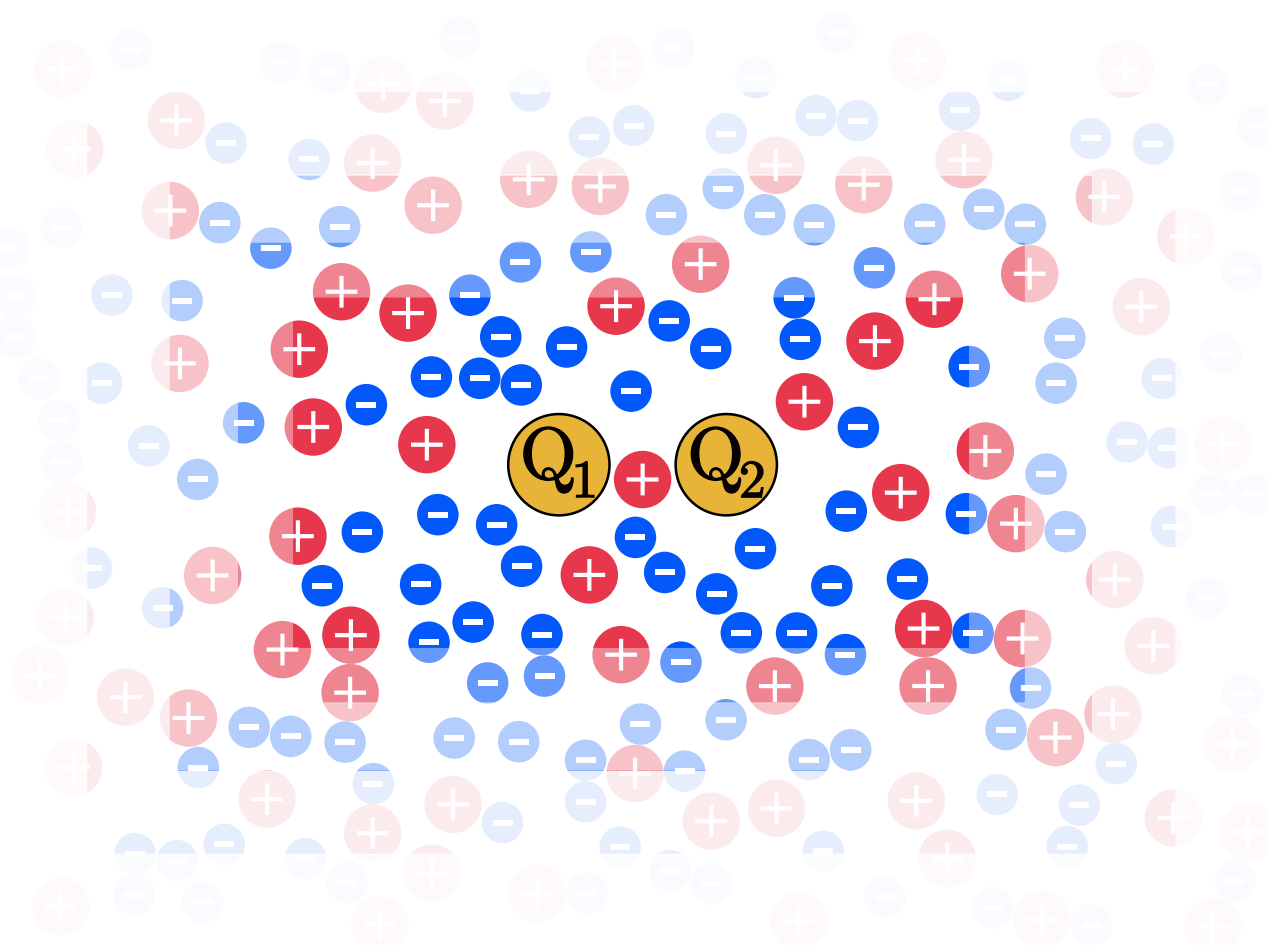
Coulomb systems in one and two dimensions: exact results
Doctorate Thesis in Physics, Université Paris-Sacay, Universidad de los Andes (2021)
Soft matter often features charged units. These charges interact through Coulomb forces, the treatment of which is difficult due to their long-range nature. This thesis gives results for three manybody systems where every long-range interaction is included, without approximations.
In Chapter 1, we report exact results for a one dimensional electroneutral salt-free suspension made of two fixed colloids and N neutralizing mobile counterions, with dielectric jumps at the colloids’ position. This includes the partition function, density profile and pressure. Moreover, the known relation between the contact density and pressure when counterions are confined between the colloids is generalized to the permeable situation. We find that for any N counterions system there may be like-charge attraction, unlike when the dielectric is homogeneous in which case N must be even. In the limit N → ∞ at fixed colloid’s charge, the mean-field (i.e. Poisson-Boltzmann equation) prediction is recovered.
In Chapter 2, we consider the previous system out of equilibrium within a homogeneous dielectric space, as a model for the dynamics of two electrical double layers. Using a combination of exact calculations where possible and Brownian dynamics simulations, we compute the relaxation time towards equilibrium (τ ). The parity of N is determinant for the relaxation dynamics: when odd, the two double-layers never decouple, irrespective of their separation L; this is the regime of like-charge attraction, where τ exhibits a diffusive scaling in L 2 for large L. Contrarily, for even N, the relevant length scale is the Bjerrum length instead of L. This leads to distinctly different dynamics: for N even, thermal effects are detrimental to relaxation, increasing τ , while they accelerate relaxation for N odd. We also show the dynamical mean-field theory (i.e. Poisson-Nernst-Planck equation) is recovered for large N, remaining operational down to a few counterions (N > 3).
In Chapter 3, we determine exactly the short-distance effective potential between two “guest” charges immersed in a two-dimensional two-component charge asymmetric plasma composed of positively (q1 = +1) and negatively (q2 = −1/2) charged point particles. The result is valid in the collapse-free regime, where the Coulombic coupling (dimensionless inverse temperature) β < 4. At high Coulombic coupling β > 2, this model features like-charge attraction. Finally, we show opposite-charges cannot repel at short-distances.
Universidad de los Andes | Vigilada Mineducación
Reconocimiento como Universidad: Decreto 1297 del 30 de mayo de 1964.
Reconocimiento personería jurídica: Resolución 28 del 23 de febrero de 1949 Minjusticia.
Web design and programming © Gabriel Téllez
